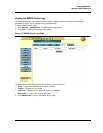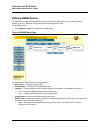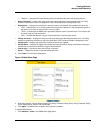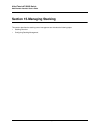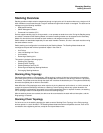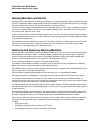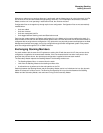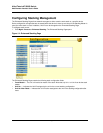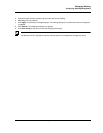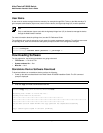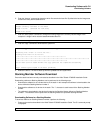
Managing Stacking
Stacking Overview
Page 171
Whenever a reboot occurs, topology discovery is performed, and the Master learns all units in the stack. Unit IDs
are saved in the unit and are learned through topology discovery. If a unit attempts to boot without a selected
Master, and the unit is not operating in stand-alone mode, the unit does not boot.
Configuration files are changed only through explicit user configuration. Configuration files are not automatically
modified when:
• Units are added
• Units are removed
• Units are reassigned Unit IDs
• Units toggle between Stacking mode and Stand-alone mode
Each time the system reboots, the Startup configuration file in the Master unit is used to configure the stack. If a
stack member is removed from the stack and then replaced with a unit with the same Unit ID, the stack member is
configured with the original device configuration. Only ports which are physically present are displayed in the Web
Management Interface home page, and can be configured through the web management system. Non-present
ports are configured through the CLI or SNMP interfaces.
Exchanging Stacking Members
If a stack member with the same Unit ID replaces an existing Unit ID with the same Unit ID, the previous device
configuration is applied to the inserted stack member. If the new inserted device has either more ports or less
ports than the previous device, the relevant port configuration is applied to the new stack member.
The Secondary Master replaces the Stacking Master if the following events occur:
• The Stacking Master fails or is removed from the stack.
• Links from the Stacking Master to the stacking members fails.
• A soft switchover is performed via the web interface or the CLI.
Switching between the Stacking Master and the Secondary Master results in a limited service loss. Any dynamic
tables are relearned if a failure occurs. The Running Configuration file is synchronized between the Stacking
Master and the Secondary Master, and continues running on the Secondary Master.



